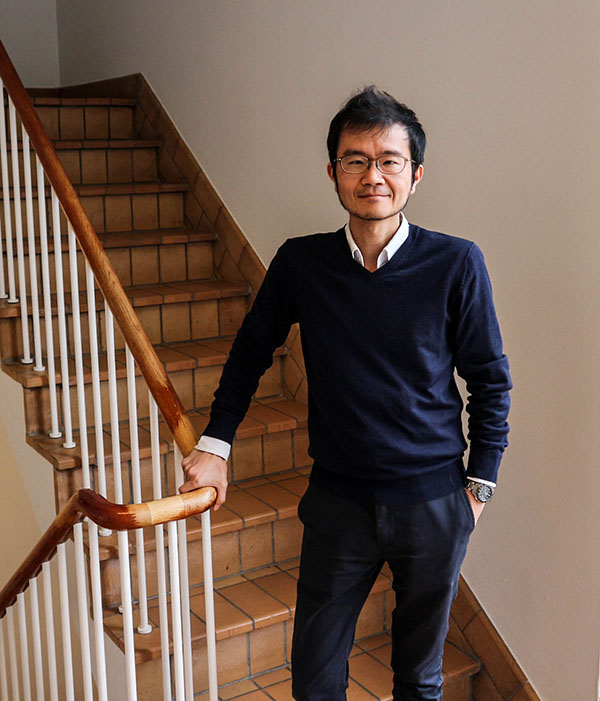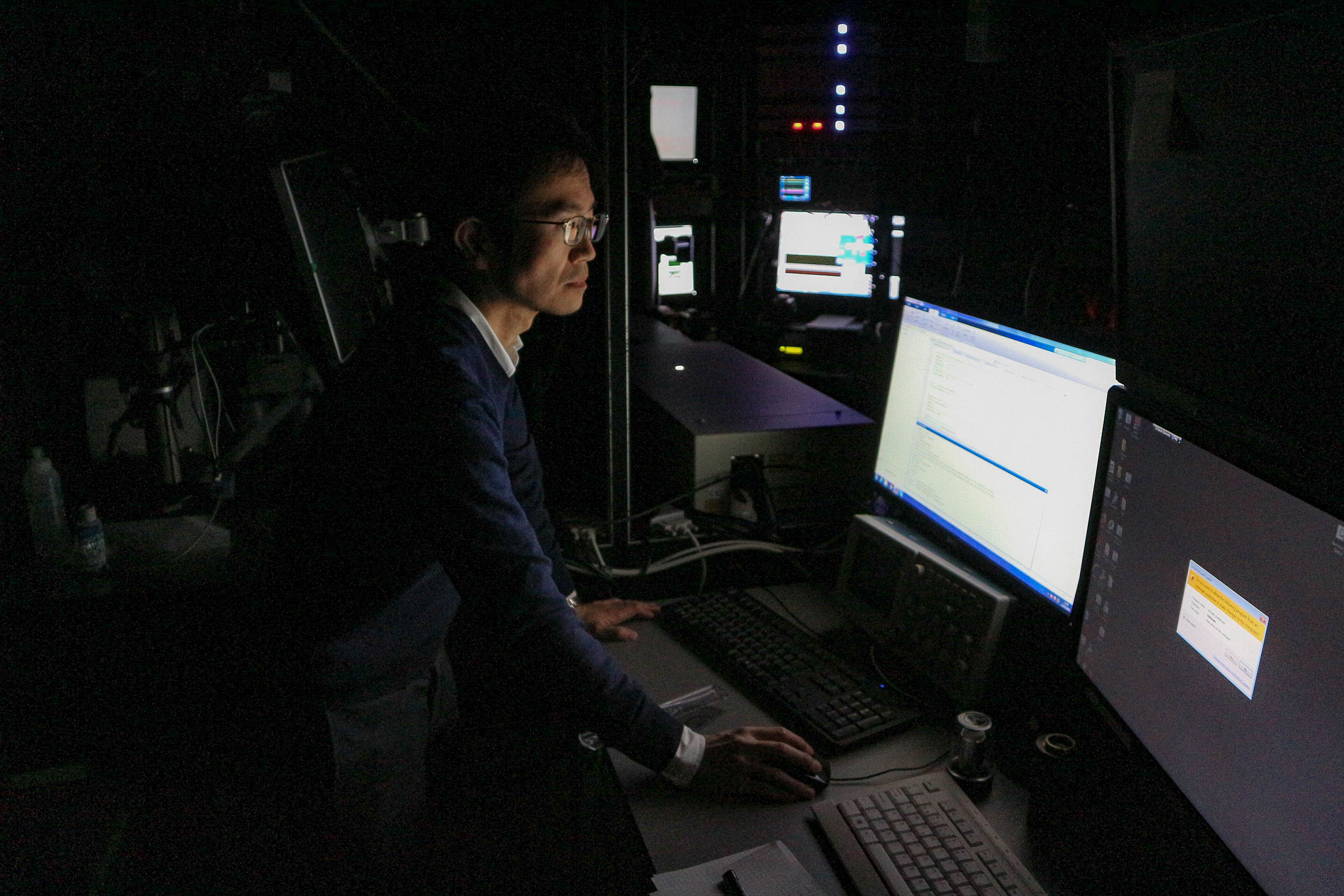Behind the Scenes: Keisuke Yonehara, Group Leader, DANDRITE
Keisuke Yonehara is head of the Spatially Asymmetric Neural Circuits in Visual System group at DANDRITE. He recently had his group leader position extended for a further four years. In our latest Behind the Scenes article, Dr Yonehara discusses his research and how made the move from veterinary science to neuroscience.


Can you tell me a bit more about your research?
We use mouse models to help better understand how the human visual system works. We particularly focus on the retina which detects and then converts light into neural signals that are then transmitted to the brain. Our main interest is how this retinal ‘circuit’ processes visual information, and also in the role that different cell types play in neuronal circuits, along with the genetic and molecular mechanisms of how these circuits are assembled.We also want to understand how impaired gene functions in these circuits cause genetic diseases such as congenital nystagmus; a disease in humans that affects the movement of the eye. Additionally, we are working to understand how visual signals processed by the retinal circuit are further processed in areas such as the visual cortex and superior colliculus, which results in the mediation of visual perceptions or visually guided behaviours, such as hunting prey or escaping from predators.
What is the big question you’re trying to answer with your research?
The main question I want to answer is how neuronal polarity, especially asymmetric neuronal connectivity, is established by a genetic mechanism. For example, there are neurons in the retina sensitive to the direction of image motion. These neurons are called ‘direction selective’ cells, and show activity when an object moves in a certain direction but not in the opposite direction. In order for these neuronal circuits to be so sensitive to the directions, the synaptic connectivity has to be extremely precise.My main question, therefore, is how are these individual neurons able to achieve this polarity and make asymmetric connections that can identify when a movement is up or down, or left or right? Another question I am trying to answer is: how are retinal signals used by the brain to mediate perception or behaviour?
Can you describe the translational impact that your research may have for people?
Three years ago we published a paper in Neuron with Prof. Botond Roska which described how a mutation in a gene called FRMD7 is responsible for human congenital nystagmus. Usually people have an eye movement reflex to follow a slowly moving visual field to stabilise their gaze. However, people with this congenital nystagmus do not have such a reflex. This congenital nystagmus is relatively common, affecting around 1 in 1500 people worldwide, and mainly affects the clarity of vision. Through our research, we were able to show that part of the mechanism underlying this congenital nystagmus is the impaired motion computation in the retina caused by a loss of neuronal polarity and asymmetric connections. Now, our group is working to restore motion computation ability in our disease model mice by combining in vivo gene editing approaches and physiological analysis. I hope we can make a contribution to help people with this condition.
Could you tell me a bit about your group at DANDRITE?
We’re a very international group and diverse in terms of our backgrounds and experience. I’m originally from Japan but did my postdoctoral work in Basel, Switzerland. We have four postdoctoral researchers; one is Hungarian Romanian and did his PhD in the USA. He is an expert in genetics and molecular biology and behaviour analysis. We then have a postdoc from Portugal who completed her PhD in the USA; she is an expert in imaging and molecular biology. We also have two Japanese postdocs; one specialises in electrophysiology and the other has a PhD in cancer research from the UK. I have three PhD students who are all from Denmark and we are further supported by our technician, who is also from Denmark, and two assistants.
What are you working on at the moment, and do you collaborate with other researchers at DANDRITE or further afield?
In our group, we work together a lot, as the problems we are addressing require a multidisciplinary approach, meaning a molecular biologist and a physiologist usually work together.We have a lot of ongoing international collaborations, such as a project with researchers at the Max Planck Institute. We work with them to use 3D electron microscopy to map specific neuronal connections in the retina to find anatomical arrangements underlying motion computation. At DANDRITE we’re working with Duda Kvitsiani to build a VR system for mice that can help us to image their neuronal activity. Another collaboration is with Hanne Poulson, a team leader at DANDRITE, where we’re working to develop a mouse model that will help us to better understand how a particular genetic mutation leads to the degeneration of retinal neurons. We also work with Poul Nissen, as his expertise helps us to better understand the structure of protein FRMD7.
What would you like to achieve in your second phase as a DANDRITE group leader?
The projects we work on take time, so a priority for the next few years is to publish some results. I also want to focus on more translational research projects as until now we have been more focused on basic research. We believe we have a good strategy now for treating congenital nystagmus so we want to work on repairing symptoms of the disorder in disease model animals.
How did you come to be a group leader at DANDRITE?
I was born in Japan and went to veterinary school at the University of Tokyo. After qualifying as a veterinary doctor, I decided I wanted to train in molecular neurobiology so I did a PhD in in Okazaki in Japan. During my PhD, and purely by chance, I found that in one type of transgenic mouse model it might be possible to study the development of motion-sensitive neurons by genetically labelling cell types. I found this model after I struggled to work with hypothalamus, as I found their circuits too complex…and retina seemed more simple. This resulted in the discovery of this transgenic mouse model.However, I was still a molecular biologist so wasn’t experienced in the physiological experiments required to fully understand how these motion-sensitive neurons worked. This drove me to seek out someone who could help me learn the techniques I needed. I found a PI called Botond Roksa in Basel, Switzerland, and was able to move there and take up a postdoc position. Here, I learned how to carry out physiological techniques in the retina using the mouse model I had discovered in Okazaki. After several years there I was ready to start my own group, which led me to apply for the group leader position at DANDRITE.
How do the research environments differ between Japan and Denmark?
The funding situation in Denmark is very different to Japan. In Japan, it’s difficult for a young scientist to find an independent position with good funding. I also like that the culture here in Denmark is very ‘flat’; in Japan it’s very hierarchical so as a young researcher it can be frustrating. The lifestyle is also very different; people in Denmark enjoy their personal life and have a much better work-life balance, whereas the work hours in Japan are pretty tough. However, coming from Japan, I did learn the importance of being productive. From the start, I was trained to achieve a lot in a very short space of time so this has been very good in terms of my career and discipline as a researcher.
What’s the best piece of advice you have ever received?
The best thing my postdoc mentor Botond Roska told me was that we should always push our limits. We should not just stay in our comfort zone, but should always push for more. Being inventive and always striving to learn and achieve more is really important for scientists...and this is something I always try to remember!Further informationFor more information, visit the Yonehara Group webpage.
For further information, visit the Yonehara Group page.